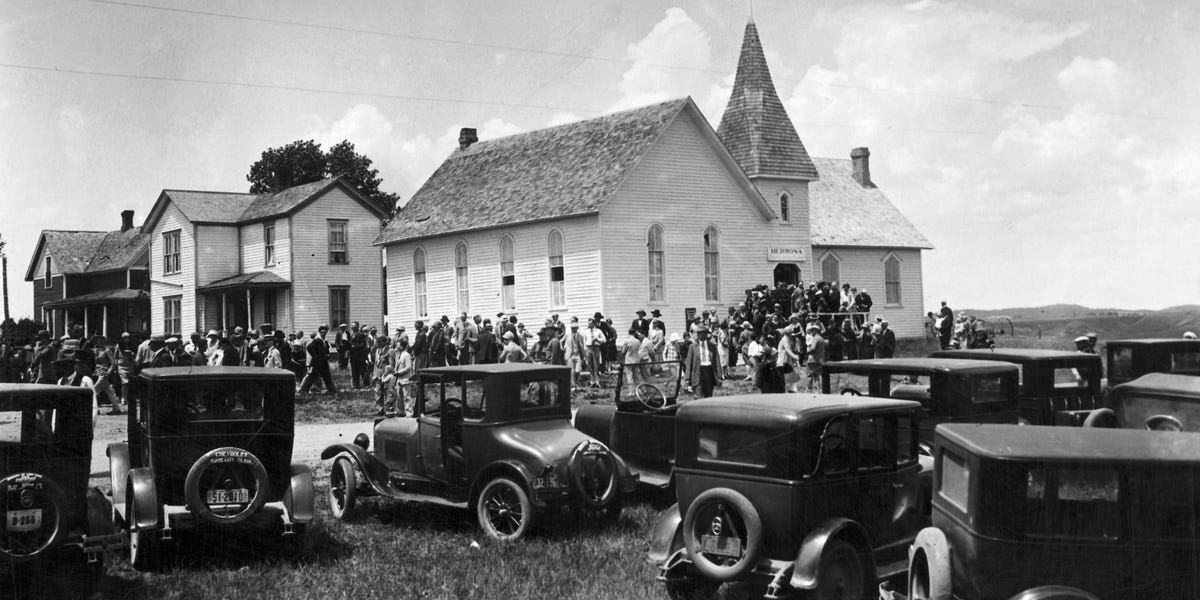This as-told-to essay is based on a conversation with Sriram Ramkrishna, a 56-year-old job seeker in Portland, Oregon, who worked at Intel for over two decades cumulatively, most recently as a senior community manager and developer relations professional. He is among the thousands of Intel employees who have been laid off this year. Business Insider has verified his past employment and layoff documentation. This essay has been edited for length and clarity.
In July, I was laid off by Intel — for the second time.
Although I was given a few weeks’ notice to land a new role within the company, I didn’t try too hard to find one. After my second time around at Intel, part of me felt it was time for a new adventure — even if I knew the job market could be challenging.
I started casually looking for work right away, but I wasn’t too stressed about it, as my wife and I had built a financial cushion over the years.
However, on July 31 — my last official day at Intel — my wife also lost her job. With both of us out of work, my mindset shifted from “I’ll find a job when I can” to “I’d better find a job.”
I was unsure about rejoining Intel, but I needed a job
I first joined Intel as a software engineer in 1996, shortly after graduating from college. I spent the next 20 years at the company until 2016, when I was laid off for the first time.
After a difficult 16-month search, I managed to find an engineer job at another company, but in 2022, I was laid off again.
As I searched for work, a role at Intel came onto my radar. However, I was of two minds about returning; many of us who were laid off in 2016 were deeply frustrated by how the job cuts were executed and how we were caught off guard. But I needed a job, and wasn’t in a position to pass up opportunities.
I eventually was offered a developer relations role and accepted it.
Dealing with an Intel layoff for the second time
Three years later, my second Intel layoff forced me to start the job search process all over again.
I first became aware that my job was in jeopardy in June, when my unit was informed that our group was being dissolved. We were told the company would spend the rest of the month shopping our work to other business units, but if they couldn’t find a fit, we’d lose our jobs.
In early July, we learned that there was no fit and that we had about three weeks to try to land another role within Intel. Otherwise, we’d be given a severance package and laid off.
One of the first things my wife and I did was take a vacation we’d already booked to Europe, tacked onto an industry conference I was attending.
During the trip, I started poking around job boards and did a few interviews that came through recruiter reachouts on LinkedIn. My goal was to get a feel for the job market. I thought it didn’t seem too bad for the types of roles I was interested in.
When my wife and I returned from our travels in late July — just a few days before my last day at Intel and when she was let go — I felt rested and ready to focus on my job search.
The job search has been harder than I expected due to the competitive market
Despite my initial optimism, the past four months of my job search have been challenging. I’ve landed some interviews, but I’ve either been rejected or ghosted afterward.
I think I’m in a better position this time around, compared to after being laid off in 2016 — at least in some ways.
In 2016, it had been 20 years since my last interview, whereas I just went through a job search in 2022 before rejoining Intel. I also had a less defined career identity before, but it’s now clear that I’m a developer relations person, which makes it easier to target the kinds of roles I’m looking for.
However, what’s particularly challenging about my current job search is the competitive nature of the market. If an employer I’m interested in posts a job, there’s bound to be at least 400 applicants. I’ve had to find a way to stand out, especially when going through the front door doesn’t feel like a viable option.
One way I’ve been trying to do this is by optimizing my résumé keywords for applicant tracking systems using ChatGPT and a career firm that I was given access to as part of my Intel severance package.
But I know that’s not enough, so I’ve also been relying on my network. Through conferences and past connections, I’ve been invited to private developer relations Slack channels and Discord servers, where I’ve connected with others in my field. Some have job channels where I can connect directly with hiring managers who post openings. I’ve also been trying to use referrals and connections to land interviews.
One of the things that has kept me going is the support of my former Intel colleagues who also lost their jobs. Many of us have been helping each other with our job searches and sharing opportunities.
Through my network, I’ve helped some former colleagues get interviews. These folks were young and recently graduated, and I felt an obligation to help them as it was their first layoff.
It feels like we’re all looking out for one another. When I got laid off in 2016, I didn’t have the same kind of support. This time, it’s been different, and that’s been really amazing.
I hope to secure a job by early next year
Intel provided a healthy severance package, which has been helpful. However, with both my wife and me out of work, it’s become more challenging.
It’ll be a while before I start panicking about finances, but I definitely want to secure a job by early next year.
I’m hopeful I’ll land something by then, but if not, I might more seriously explore tech roles in Europe, where I think there will be growth in opportunities due to investment in the industry. Going forward, I plan to keep monitoring the Slack and Discord groups, and continue attending networking events and job fairs.
I think a lot of the search will come down to luck and timing.









